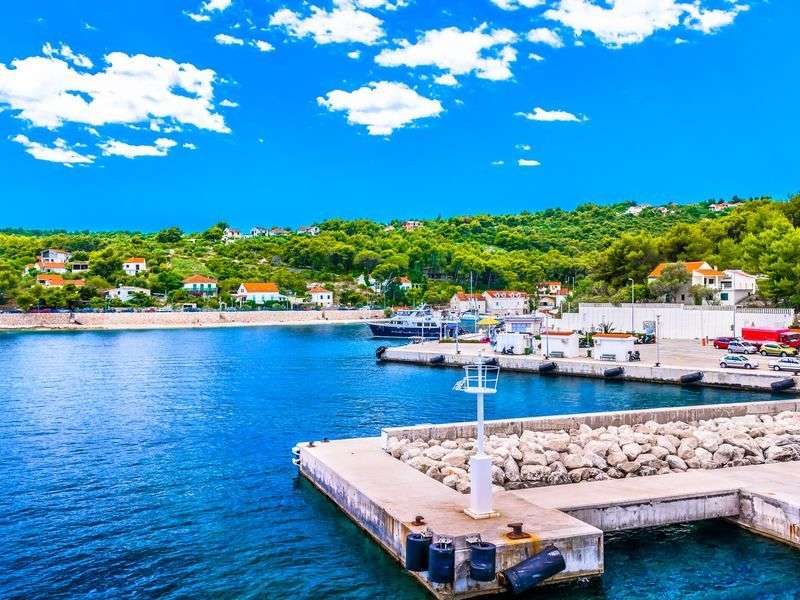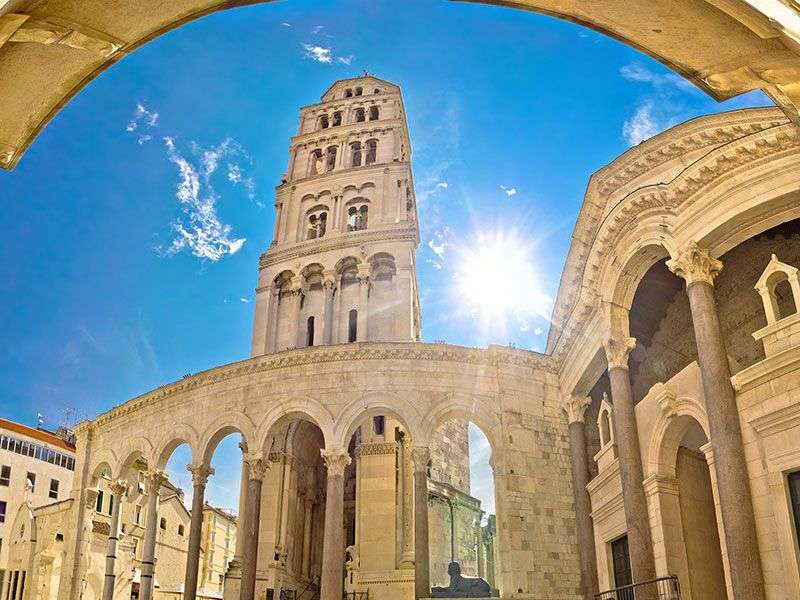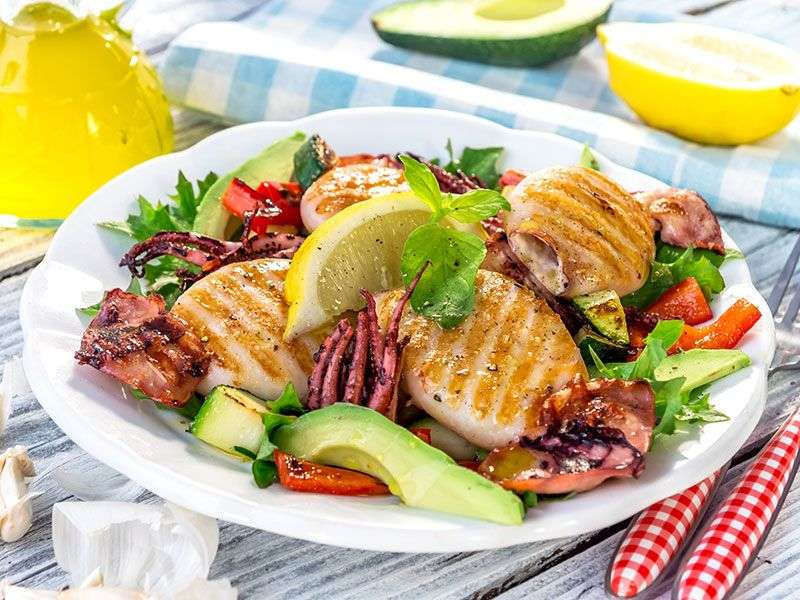If you would like to visit one of the most buzzing and most typically Mediterranean Croatian cities, Split is the place to go. The Middle-Dalmatian holiday resort has a wonderful coast, significant nightlife and monuments from the Roman period, which all make the place very attractive among visitors. What to do in Split? You can now learn about the great programmes you can expect if you choose this town.
This article gives you an overview of the following topics:
- Things to do in Split: The most popular beaches
- What to do in Split: Hiking opportunities
- Things to do in Split: Visit the sights to see in town!
- Traditions and events in Split
- Gastronomy of Split
Things to do in Split: The most popular beaches
Bačvice Beach is located 10-15 minutes on foot from the pedestrian precinct. It is 300 metres long and there is crystal-clear water here. This is the most famous and popular beach in the city; it has a Blue Flag certificate. It is almost always crowded due to many visitors. There are cafés, restaurants, showers and changing rooms on the sandy concrete beach. We can rent sunshades and lounges. Lifeguards provide safety for swimmers. The water deepens very slowly, so we particularly recommend the beach to families with children. The kids can also enjoy a playground here with a bounce house, a trampoline and a slide. One of the most popular sports on the beach is a ball game called “picigin”; they play it in the shallow water.
Another famous beach in Split is Firule, which is a favourite among families with small children thanks to the sand and the shade provided by the trees. If you don’t like crowds, this is an ideal beach for you as it is not as crammed as Bačvice. If you get hungry, you can find restaurants and bars here as well.
What to do in Split: Hiking opportunities
Marjan Hill
The 178-metre-high Marjan Hill, towering above the city in the northwest, offers a breathtaking panorama. You can access the hill in 15-30 minutes from the old city. Your walk will begin on narrow streets and you will continue into a pine forest. The place is worth visiting not only for the view but also because of the Mediterranean flora. You can find boardwalks, sports grounds and playgrounds in the area.
The islands of Brač and Šolta
Brač Island, which has a large size and wonderful natural characteristics, can be reached in-app. 45 minutes from the port of Split. We recommend that you visit the place if you are looking for active recreation, as it is ideal for scuba-diving, swimming, hiking and cycling. Read about what to do in Brač.
If you prefer a calm vacation in nature, it is also worth visiting Šolta Island. It is located only 15 kilometres from Split; its most interesting sight can be found in the town of Nečujam. Legend has it that the beach located here used to be the favourite spot of Roman emperor Diocletian for relaxation. We can explore wall remains in the area, and divers may even find pieces of pots from the Roman age. If you are a fan of unique places, you must also see Grohote where you can admire several authentic Dalmatian buildings and street remains. Interestingly, these haven’t changed a bit in hundreds of years. Read about what to do in Šolta.
Things to do in Split: Visit the sights to see in town!
Diocletian’s Palace
One of the most important sights in the entire Dalmatian region is Diocletian’s Palace made of white limestones, which is also a UNESCO World Heritage site. It originates in the Roman period; they used the limestone of Brač Island nearby for its building. The palace can be accessed through 4 gates, the most beautiful of which is called the Golden Gate. Roman emperor Diocletian spent the last years of his life here – his mausoleum or shrine can also be found in the building.
Cathedral of St. Duje
The cathedral is located inside the walls of Diocletian’s Palace, near the Peristilium, which is a courtyard surrounded by a row of Corinthian columns. The mausoleum, which belonged to the emperor, has been operating as a Christian church since the 7th century. The building got its name from the patron saint of the city, St. Dujmo. The monumental entrance is a perfect example of the Hellenistic style. The dome of the cathedral, decorated with mosaics, was built from bricks; there is a wonderful view from the bell tower.
Temple of Jupiter
The emperor had three churches built-in Diocletian’s Palace; they are located in the western wing of the complex. The church commemorating the Roman chief deity Jupiter is an incredible ruin; it is among the monuments in the best condition from the Roman period. The sanctuary operates as the baptistery of the Cathedral of St. Duje today.
The statue of Gregory of Nin
The giant statue in the northern part of the old city is one of the most popular sights in Split. It is 7 metres high and was made by sculptor Ivan Meštrović in 1929. The bishop had a significant role in the development of the Croatian church and the Croatian language. In order to achieve his goals, he even stood up to the Pope at that time. Legend has it that if you touch the statue’s big toe, you will find your luck.
Papalić Palace
The palace, built-in the 15th century, is among the most significant Gothic monuments, located in the northeastern part of the Diocletian church complex. The Papalić family moved in Split at the beginning of the 14th century. They were among the oldest and classiest families at the time. Papalić Palace serves as the city museum today.
Split Main Square
You can admire several beautiful buildings on the central square – it may even feel like being in Venice thanks to the Venetian palaces. The square is the favourite meeting spot for the locals, offering many cafés and shops.
Museums
The Maritime Museum is located in a fort from the 17th century. You can see maps, boat miniatures, weapons, cannons and shipwrecks here in the first place. Although it is located a bit farther from the centre of Split, the Archaeological Museum is also worth visiting. They exhibit a collection of different items, ceramics, funerary sculpture, jewellery and coins here, as well as archaeological findings from Salona, which used to be a Roman colony.
Traditions and events in Split
They organise the event Split Summer every summer, offering plays, opera and classical music performances. Another important event is that 2-day-long Split Beach Festival held in August. It takes place on the beach of Bačvice in a giant bay with sandy shores. The Holy Cross Festival and the floral and wine fares are also among the important events organised in the city.
Nightlife
The holiday resort has many cosy bars and discos, so everyone will find their favourite place that suits their needs and favoured genre. Most people choose Diocletian’s Palace or the Bačvice complex if they want to have a party. Explore places such as the Academia Club Ghetto, the Red Room, the Tropic Club Ecuador or the O’Hara Music Club!
Gastronomy of Split
The resort is considered a gastronomic centre in Croatia with several restaurants and pizzerias with a terrace located in a beautiful environment. You can indulge in gastronomic pleasures among the historic buildings or on the beach. The most famous speciality in the region is the pasticada. It is a dish made with marinated beef, prepared for two days. It is also worth visiting the islands located opposite Split, as they have excellent wines. Red wines are the most popular, but they produce white wine too on the island of Hvar.
The best restaurants
Bokeria
Bokeria, named after the famous market of La Boqueria in Barcelona, was opened in 2014. The restaurant, which can be found in the old city, became the hottest eatery in the city even among locals. It has a wonderful atmosphere; the furniture is particularly modern and stylish. You can taste the most delicious dishes of the Dalmatian cuisine here, but they also offer gourmet burgers. The restaurant is more expensive than the average ones.
Dvor
The restaurant which also offers delicious meals is located 20 minutes from the old city of Split on foot, near Bačvice beach. It has a beautiful garden providing an amazing view of the sea. Similarly to the Bokeria, this is also a classy restaurant with higher prices.
Villa Spiza
This tiny restaurant can be found in a narrow opening of an alley, making it a bit more difficult to find. It is popular among locals and tourists as well as they have simple and traditional fresh Dalmatian food. Even though the menu is not very extensive, it is still diverse and there are different dishes offered each day. They have fair prices.
Great markets
The market called Pazar can be found next to the eastern gate of Diocletian’s Palace; this is the largest outdoor market in the city. If you are visiting Split, you should also see the Peškarija fish market in the western corner. They sell fresh products of the highest quality every day, and beside fish, you can also find shells and octopuses here. The market not only plays a central role in the city’s life, but it is also an interesting architectural monument. It was built more than 120 years ago in Art Nouveau style.
In this article, we listed the best things to do in Split. If you visit this town in Middle Dalmatia, you can choose from great hiking opportunities, beautiful architecture and delicious local gastronomy. Read more if you plan Split sailing or rent a boat in Split.




